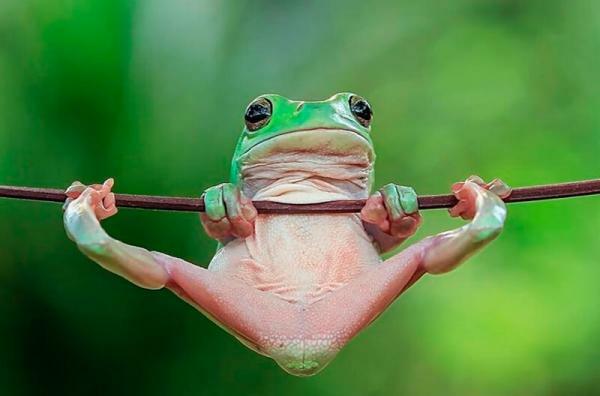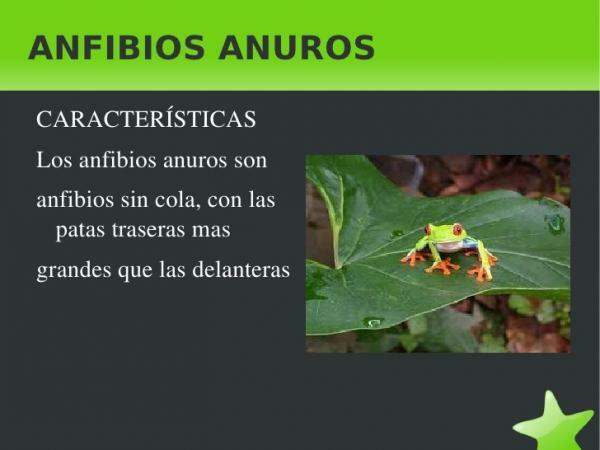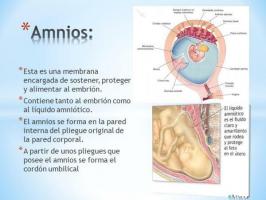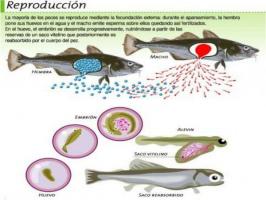Types of amphibians and their characteristics

Image: Animapedia
The amphibians They are the oldest vertebrates and are believed to have been the first to go from living in water to living on land. These vertebrate, tetrapod, and cold-blooded animals have extraordinary qualities and can live in many different environments. Its name comes from the Greek and means "both lives", referring to the fact that they undergo a great transformation called metamorphosis.
Within the amphibians we can find ourselves three groups of animals comprising animals as different as frogs and toads (anurans), salamanders (caudates) or caecilians (gymnofions). In this lesson from a TEACHER we will review the three types of amphibians and their characteristics. You want to know more? Keep reading!
Index
- Amphibians and their main characteristics
- Characteristics of anurans
- Caudate characteristics
- Characteristics of the amphibian gymnofions
Amphibians and their main characteristics.
The amphibiansthey have very special characteristics. These animals are vertebrates, anamniotes (their eggs lack a covering called amnion), tetrapods, and cold-blooded. In addition, they lay eggs (they are oviparous), have thin, moist skin, and their heart has three chambers.
In addition, during the metamorphosis process, they change from having a gill respiration (in water) to a pulmonary respiration (on land). To defend themselves, amphibians are capable of different mechanisms: they can cover the surface of their body with toxic substances, have very striking colors, etc.
In ancient times there were many more groups of amphibians, but currently there are only three: anurans, caudates and gimnofions. These groups have been made mainly according to their way of moving (locomotion) and the structures they use for it.

Image: Comparison Chart
Characteristics of anurans.
The anurans they are the largest and most known group of amphibians. In it you can find up to 600 different species of animals, although some are in danger of extinction. The best known anurans are frogs and toads. The word anuro comes from the Greek "tailless”, Which is the main characteristic of this group: during their adult stage they do not have a tail.
Other features of these amphibians are:
- they have the short and wide body and no neck
- move by jumps, so its hind legs are more developed
- they have a big head and a wide mouth
- have bulging eyes with lids
- his tongue projects out (it is protractile) and use it to hunt
- tadpoles are herbivores or omnivores whereas when they are adults they are carnivores. They feed on any animal that they can swallow in one bite (small insects such as mosquitoes, small spiders, worms, snails, etc.)
- they have four toes on the front legs and five on the back legs joined by membranes (interdigital membranes) that allow them to swim and jump better
- your skin may present different colors. In some cases they use it to hide or be confused with the environment, but other times they seek to confuse their predators and make them think that they are other species (poisonous species)
- In some species of frog, the fingertips end in sticky suction cups that help hold onto vertical surfaces
Some people confuse frogs and toads, can you tell the difference? Too easy! Frogs have moist, smooth skin and are mostly found in water while toads they have darker, rough and sticky skin, they tend to live in humid lands and are slower and fatter than the frogs

Image: SlidePlayer
Characteristics of the caudates.
Caudates are the second largest and most well-known group of amphibians. Are the salamanders or newts and its main characteristic is that its four legs are short and equal (unlike anurans, which had more developed hind legs). Other characteristics of these animals are:
- in adult state they have a tail prominent
- their body is elongated and their skulls are wide, they are arrow-shaped
- possess teeth in both jaws
- on certain occasions can regenerate certain limbs cut off like the tail
- they move walking, with slightly lateral movements, thanks to the legs and tail
- in some species of caudates some characteristics of tadpole stages are retained. An example of this is the axolotl, an animal that in adult stage has legs and a tail but retains the gills, which come out from the base of the head backwards.
Some people may mistake salamanders for lizards because of their body shape, but it is very easy to tell them apart! Lizards have scales covering their body, while the body of salamanders is smooth and more or less moist.

Image: Slideshare
Characteristics of the amphibian gymnophians.
The gymnastics They are a little-known group of amphibians, shaped like a large worm, so the characteristic that differentiates them from other groups is their absence of legs. Within this group of amphibians there are animals that are very small, measuring one centimeter and others that can measure between one meter and one and a half meters. Other characteristics of the gymnofions are:
- they are worm-shapedvermiform) and live underground, in humid tropical regions
- they have the very short tail
- they have small eyes and their sight is not very developed
- they are guided by their sense of smell: They have two tentacles, one on each side of the head, which serves to detect food
- their massive skull, well protected, allows them to excavate the earth
- they move wavy thanks to the rings that make up their bodies
- They are carnivores and can feed on different animals according to their size (from small worms to snakes or other amphibians)
Some gymnofions can be confused with earthworms, which are a group of worms called annelids. In this case they are not as easy to differentiate as in previous amphibians and their main The difference is that earthworms do not have a well-differentiated head, while earthworms gymnastics yes.
Do you have any suggestions, comments or questions about the types of amphibians and their characteristics? We'd love to read you in the comment section!

Image: Slideshare
If you want to read more articles similar to Types of amphibians and their characteristics, we recommend that you enter our category of biology.


